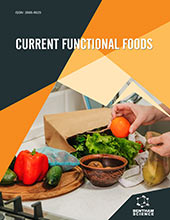
Full text loading...
Eryngium foetidum L. is a biennial herb widely used in most tropical regions as a herb, and in India, its use is essentially increasing as an aromatic spice and flavouring agent. The plant is widely populated by Turkey, Southeast Asia, the Caribbean, Thailand, China, and others. This herb is becoming more popular due to its traditional uses for various ailments. Reviews have been included in peer-reviewed publications until 2020, published in English. 55 papers conveying E. foetidum-related conformation were screened, with 30 articles proven relevant and requiring authentication knowledge to build up this analysis paper. The information about 64 phytoconstituents is responsible for treating diseases like analgesia and inflammation, hyperlipidaemia, tuberculosis, coagulation, tumours, malaria, leishmaniasis, oxidation, etc. All specific knowledge must be gathered in one location, which will also assist scientists in finding and emphasising the elements of the upcoming corner in order to assess the importance of the plant being studied or to demonstrate its medicinal value.

Article metrics loading...

Full text loading...
References


Data & Media loading...

